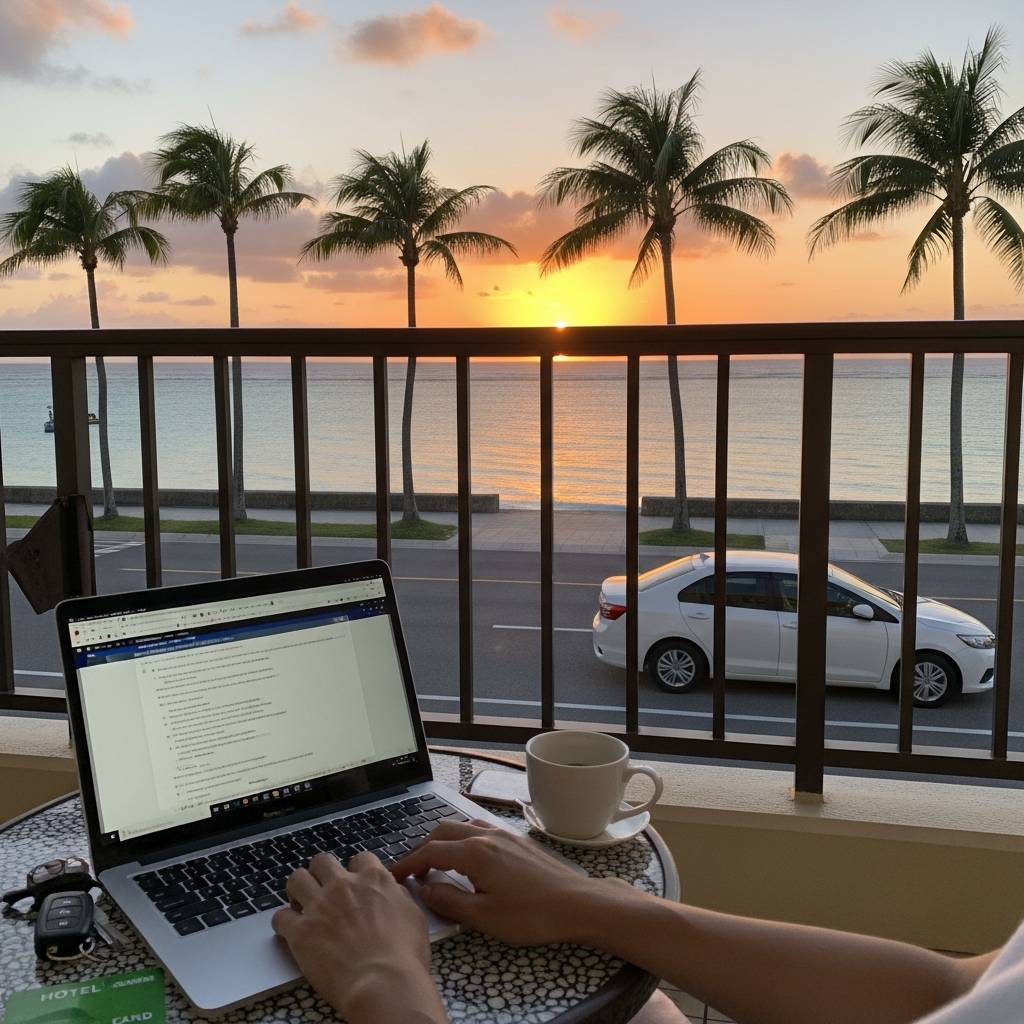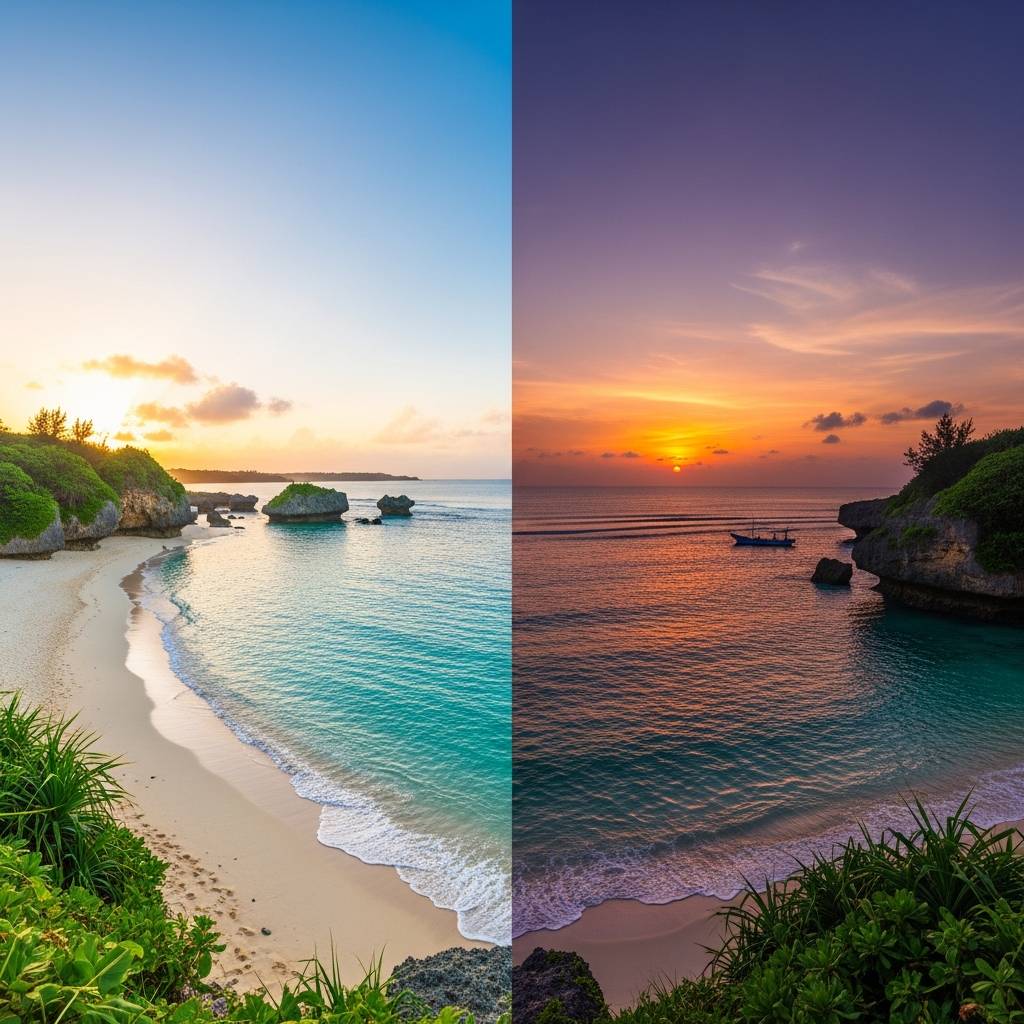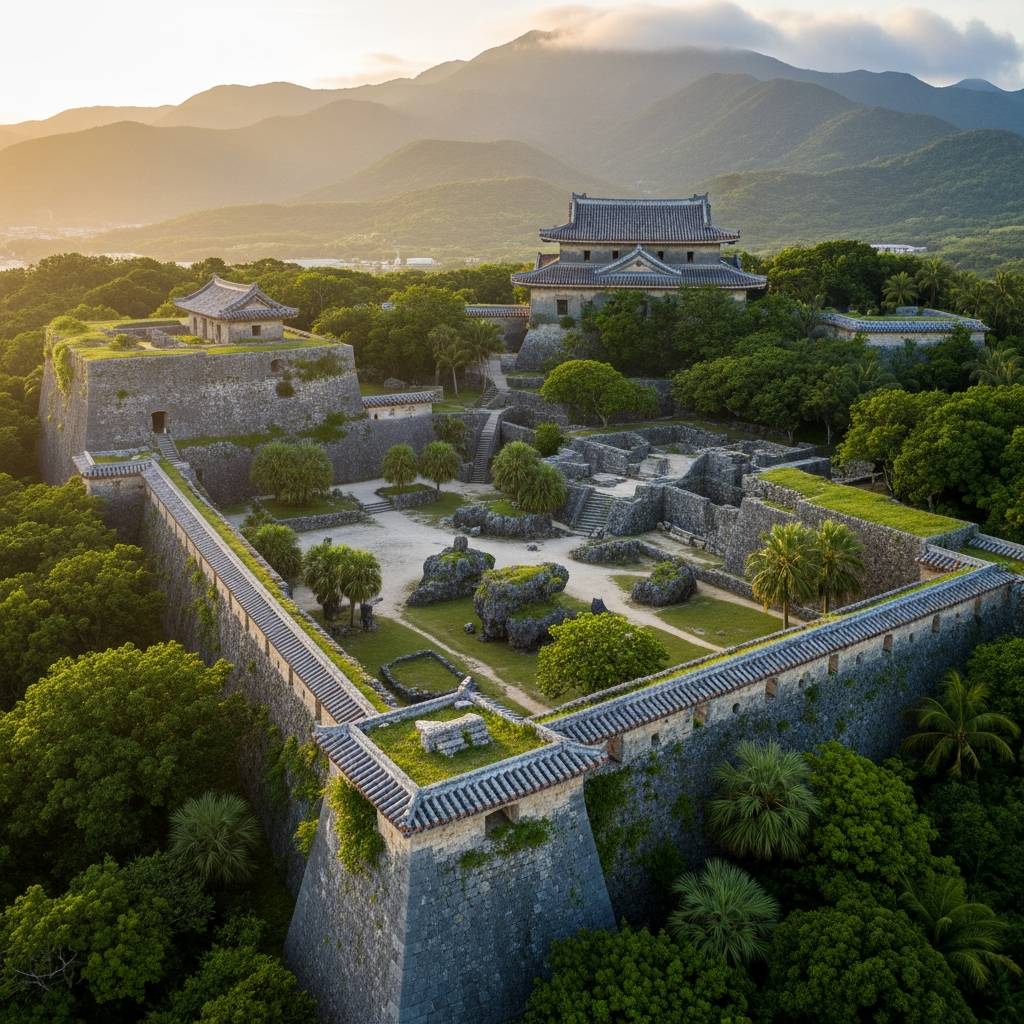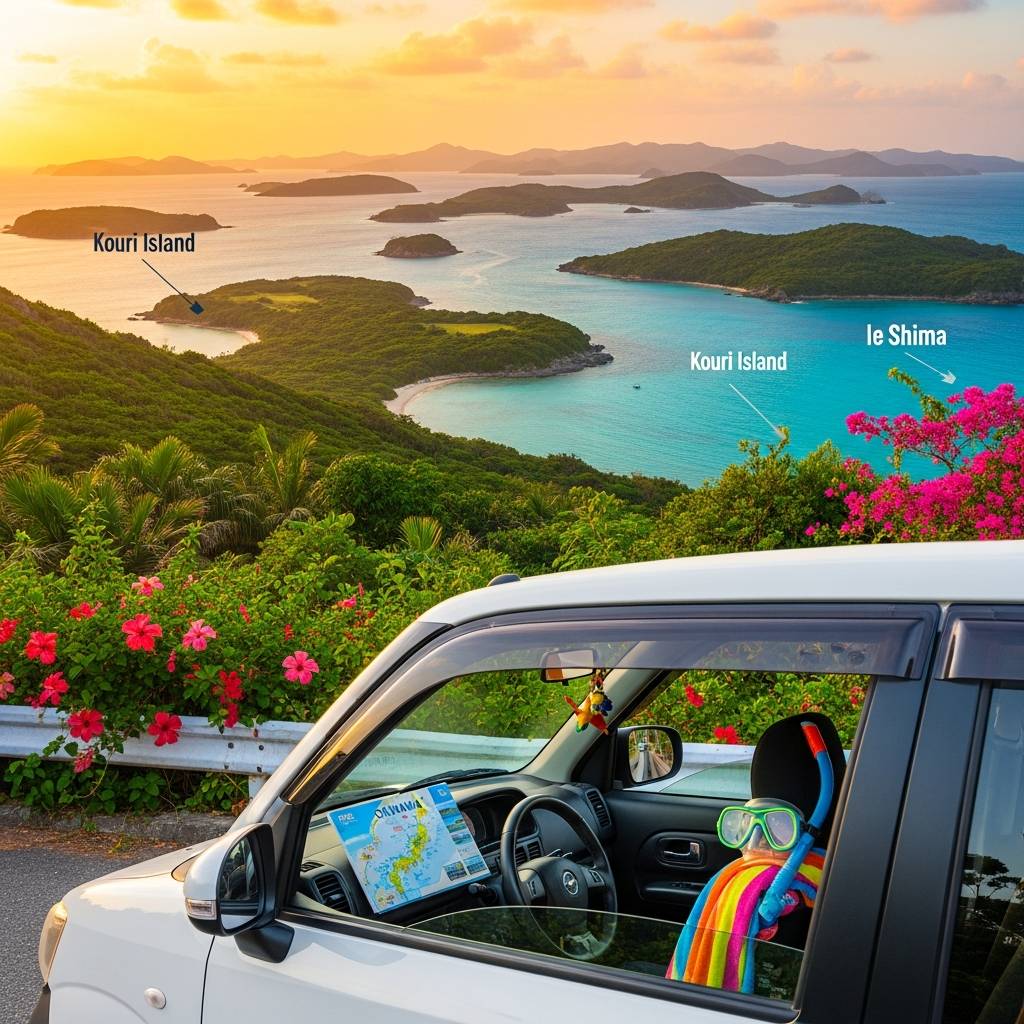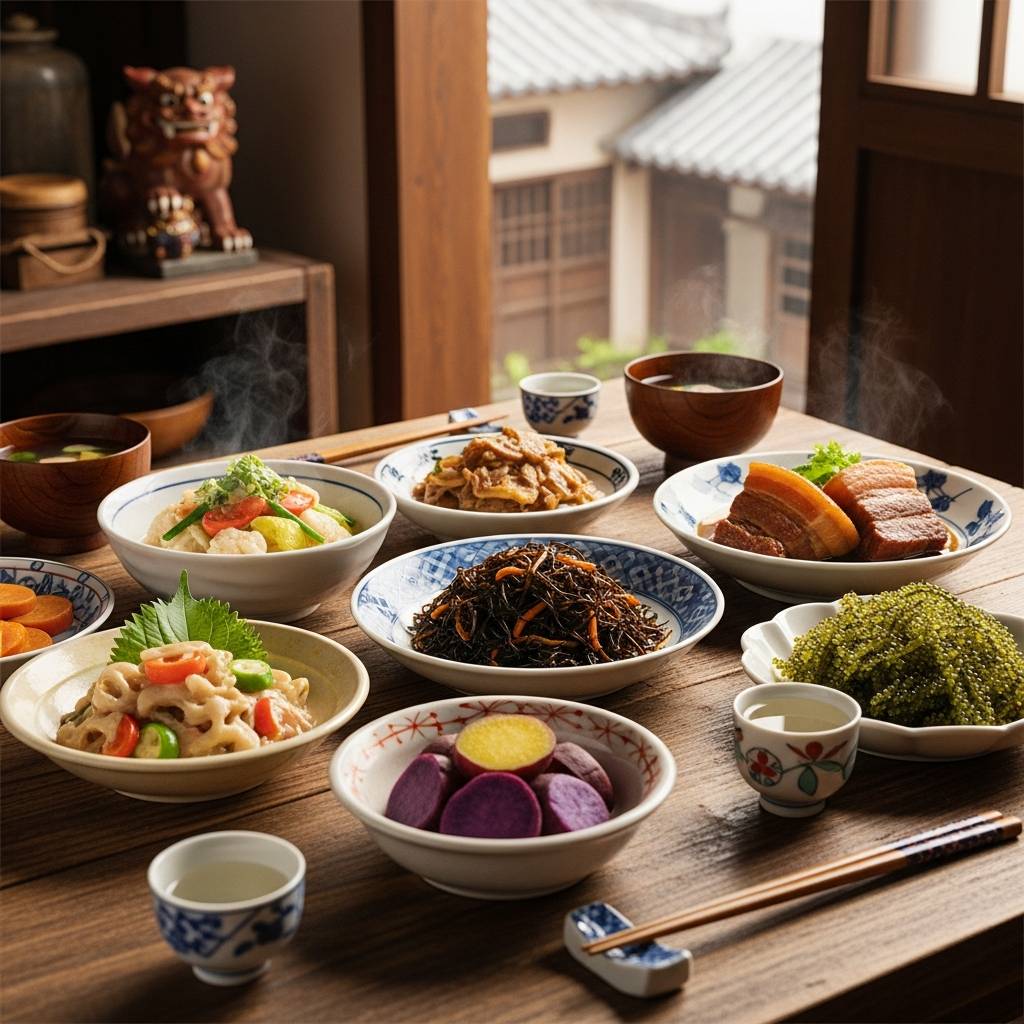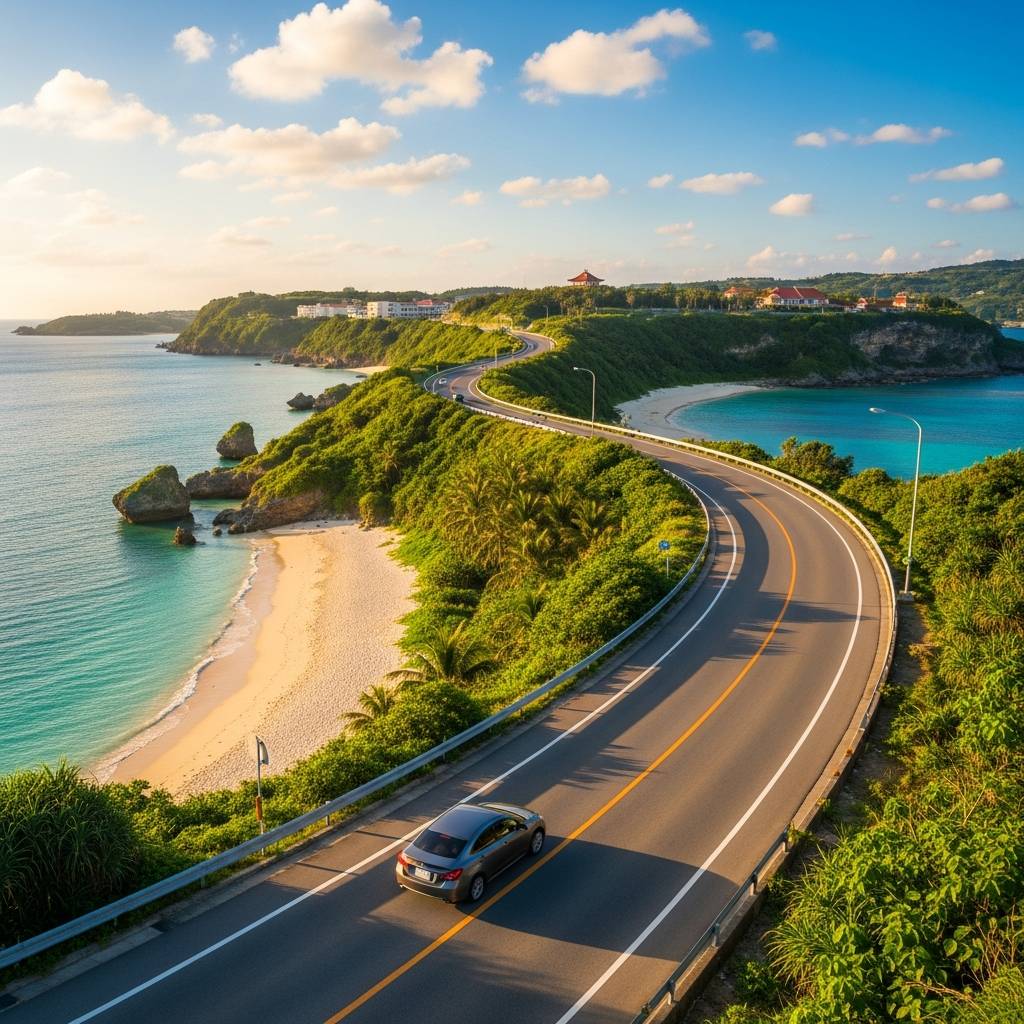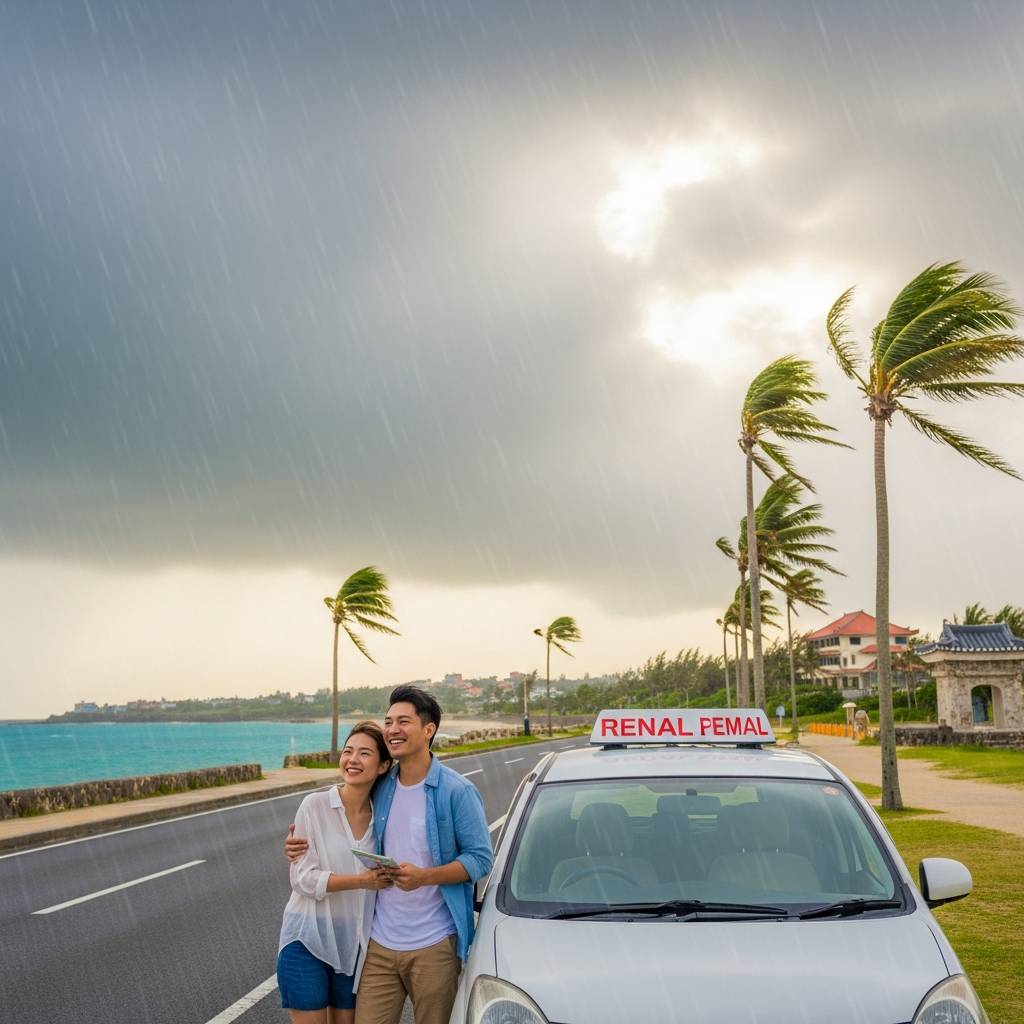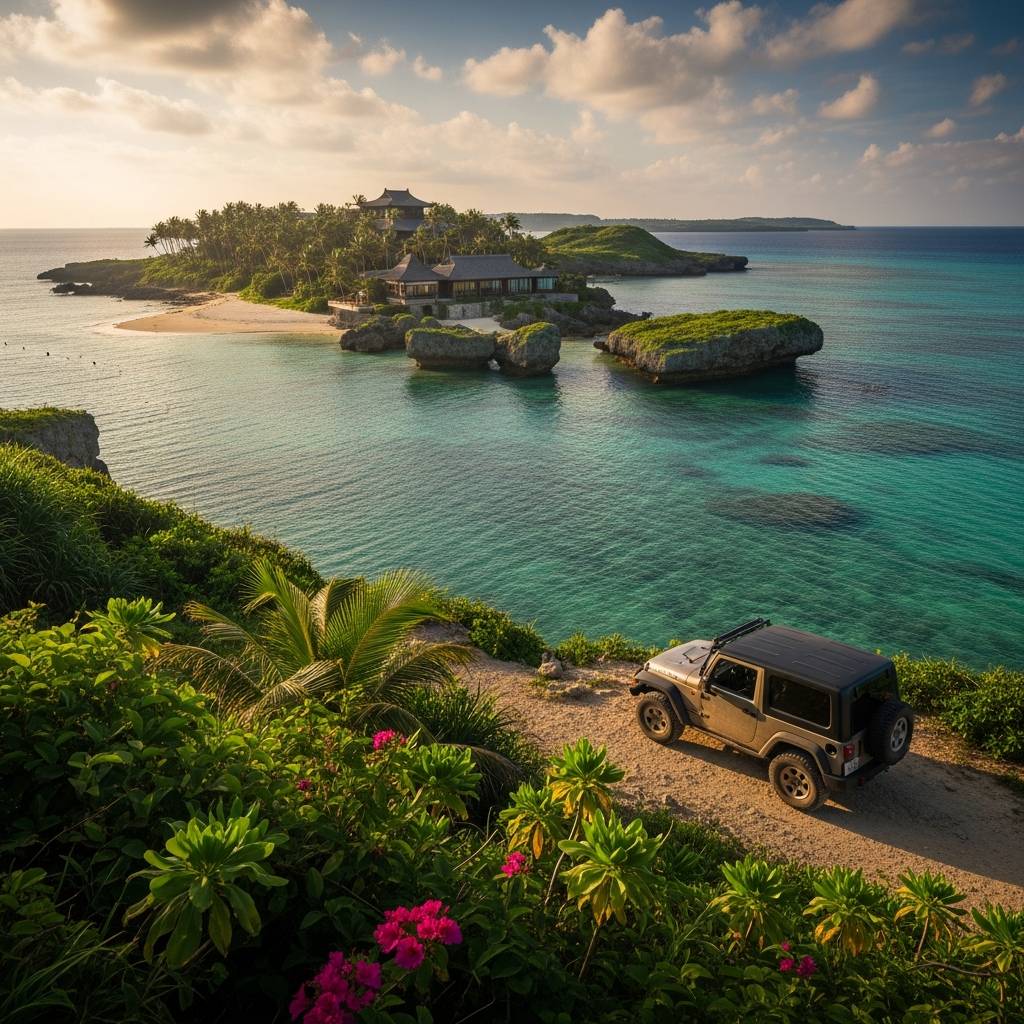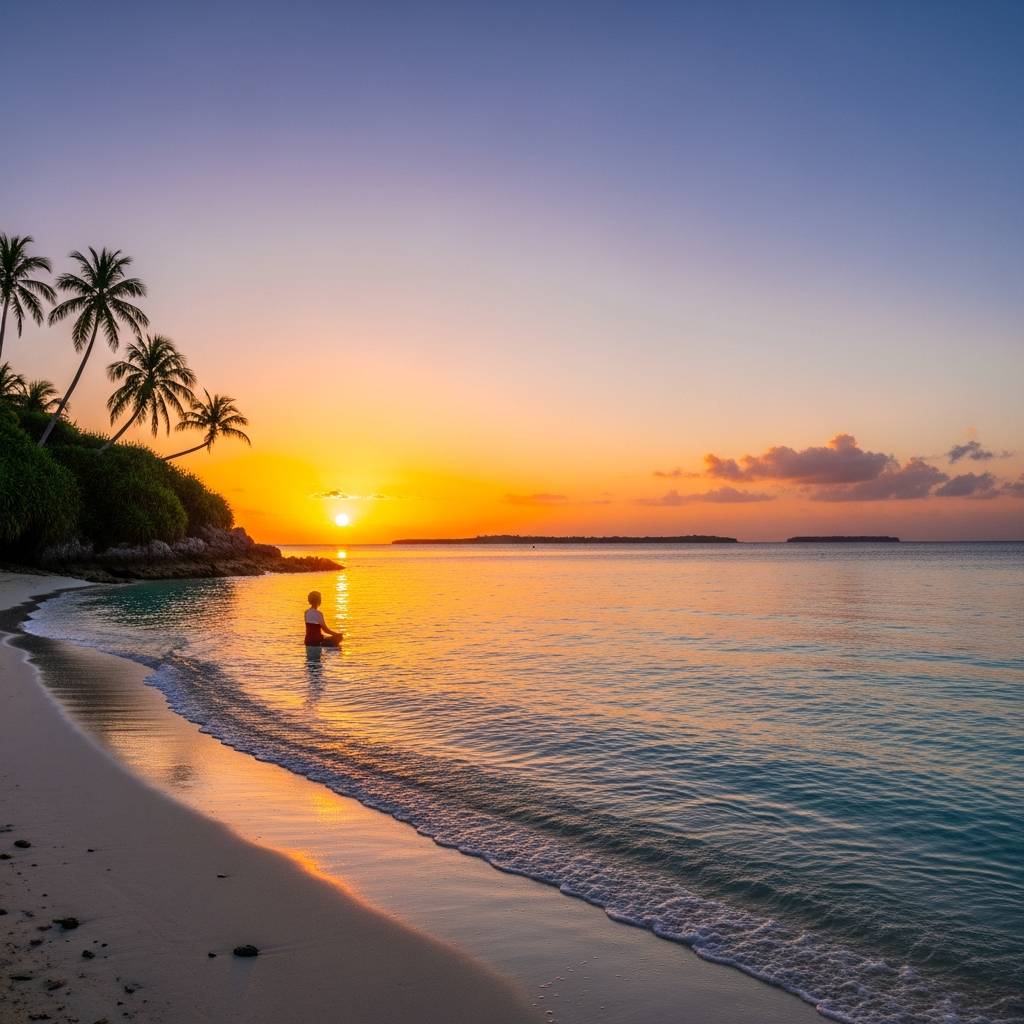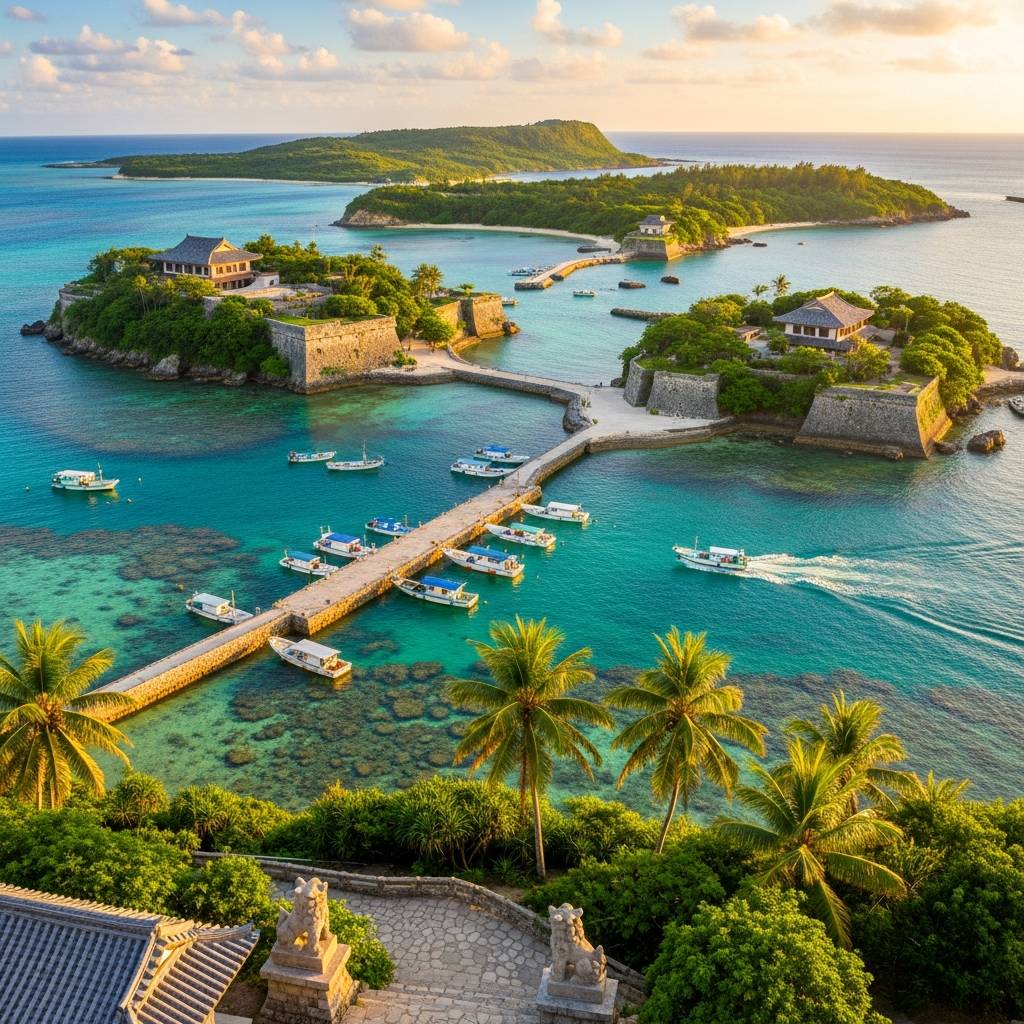Are you dreaming of white sandy beaches, crystal-clear waters, and a tropical lifestyle while maintaining your remote career? Okinawa, Japan’s southernmost prefecture, offers the perfect blend of natural beauty, modern amenities, and cultural richness that makes it an ideal destination for digital nomads seeking a balance between work and paradise.
As remote work continues to reshape our professional lives, more professionals are discovering the freedom of working from anywhere in the world. Okinawa has emerged as a hidden gem in the digital nomad community, offering both the infrastructure needed for productive work and the breathtaking landscapes that inspire creativity and well-being.
In this comprehensive guide, we’ll explore how long-term car rentals can revolutionize your remote work experience in Okinawa, providing the mobility and flexibility essential for digital nomads. We’ll dive into the best extended-stay hotel options that won’t break your budget while delivering comfort and convenience. Finally, we’ll share expert strategies for combining these two elements to create the ultimate Okinawan digital nomad lifestyle that balances professional productivity with tropical living.
Whether you’re planning your first extended work trip or looking to optimize your existing nomadic lifestyle, this guide will equip you with everything you need to know about thriving as a digital nomad in Okinawa.
1. Digital Nomad Paradise: Why Okinawa’s Long-Term Car Rentals Will Transform Your Remote Work Experience
Okinawa has emerged as Japan’s premier digital nomad destination, offering the perfect blend of tropical paradise and modern infrastructure. At the heart of a successful extended work stay is mobility, and long-term car rentals provide the freedom that remote workers crave. Unlike the mainland’s excellent public transportation, Okinawa’s scattered attractions and remote beaches demand personal transportation for those staying beyond a typical vacation. Companies like OTS Rent-a-Car and Times Car Rental offer significant monthly discounts, with rates dropping as low as ¥60,000 per month for compact vehicles—a fraction of weekly tourist rates. Digital nomads report that having continuous access to a vehicle transforms their experience, allowing for spontaneous beach workdays, exploration of hidden co-working spaces in villages like Onna and Yomitan, and the ability to establish a proper work-life balance by separating “office” locations from living spaces. With high-speed internet available throughout the island and the freedom to relocate your workspace daily, an Okinawan car becomes more than transportation—it’s your mobile office support system, enabling productive mornings at oceanfront cafes and afternoon brainstorming sessions at secluded beaches that tourists never discover.
2. The Ultimate Guide to Extended-Stay Hotels in Okinawa: Save Money While Living Your Digital Nomad Dreams
Finding the perfect extended-stay accommodation is crucial for digital nomads planning to work remotely from Okinawa. The island offers numerous options that combine comfort, convenience, and cost-effectiveness for long-term visitors.
Chatan area has become a digital nomad hotspot with properties like The Novenine Chatan, offering fully furnished apartments with kitchenettes, high-speed internet, and weekly housekeeping. Monthly rates start around ¥120,000, significantly less than daily hotel charges. Many guests appreciate the rooftop common area for networking with fellow remote workers.
In Naha, Hotel Stork offers monthly packages that include utilities, internet, and basic cleaning services. Their studio apartments feature dedicated workspaces and are conveniently located near coffeeshops and coworking spaces. Ask about their digital nomad discount program when booking directly.
For those seeking luxury on a longer stay, The Ritz-Carlton Okinawa offers monthly residence options with full hotel amenities. While premium-priced, the dedicated concierge service and resort facilities make it attractive for high-earning remote professionals.
Budget-conscious nomads should consider Condominium Sora in Yomitan, where monthly rates drop below ¥100,000 for stays exceeding two months. Each unit includes a washing machine, cooking facilities, and ocean views from select apartments.
Many extended-stay properties offer significant discounts for bookings of 30+ days, often 30-50% less than the equivalent in nightly rates. When negotiating, ask about monthly utility caps, internet speed guarantees, and workspace options.
Beyond traditional hotels, Airbnb and local rental agencies like Okinawa Home Stay specialize in monthly accommodations. Property managers often customize offerings for digital nomads, installing better desk setups or upgrading WiFi upon request.
Location selection is critical—northern areas like Nago offer peaceful environments and lower costs but fewer amenities, while central locations provide better infrastructure but higher prices. Consider your working style and personal preferences when choosing.
Most importantly, confirm internet reliability before committing. Request speed test results from potential accommodations and read reviews specifically from remote workers. Some properties have installed backup internet options specifically for their digital nomad clientele.
3. Work From Paradise: How to Combine Long-Term Car Rentals and Extended-Stay Hotels for the Perfect Okinawa Digital Nomad Setup
Creating the ideal digital nomad setup in Okinawa requires thoughtful planning, especially when it comes to accommodation and transportation. The island’s tropical beauty combined with its modern infrastructure makes it a dream destination for remote workers, but maximizing this experience depends on having the right long-term car rental and extended-stay hotel arrangement.
For accommodations, Okinawa offers several extended-stay options that cater specifically to digital nomads. The Beach Tower Okinawa in Chatan provides monthly rates with fully equipped kitchenettes and reliable high-speed internet—essential for remote work. Similarly, Condominium Hotel Monpa in Naha offers apartment-style living with dedicated workspace areas. For those seeking luxury, The Ritz-Carlton Okinawa offers extended-stay packages that include access to co-working spaces and business facilities.
When selecting your long-term car rental, companies like Times Car Rental and OTS Rent-a-Car offer substantial discounts for monthly rentals, often reducing rates by 30-40% compared to weekly rates. Look for their digital nomad packages which frequently include unlimited mileage—crucial for exploring the island’s remote beaches and hidden co-working cafés. Many Okinawa car rental companies also provide ETC cards for toll roads and GPS systems configured in multiple languages.
The strategic combination of these services creates the perfect work-life balance. For instance, basing yourself at an extended-stay hotel in central Naha gives you urban amenities while your long-term rental car provides freedom to escape to quiet beaches for focused work sessions. Consider accommodations with parking included—like the Hyatt Regency Okinawa or Vessel Hotel Campana—to maximize convenience and minimize costs.
Internet connectivity is paramount for digital nomads. Before finalizing your accommodation, verify the Wi-Fi speeds and reliability. Most extended-stay hotels advertise their internet speeds, but reading recent reviews from fellow remote workers provides more accurate insights. As backup, arrange a portable Wi-Fi device with your car rental or through providers like Orix and Nippon Rent-A-Car, who offer connectivity packages for long-term rentals.
The financial advantage of this setup becomes apparent when staying for three months or longer. Extended-stay hotels typically reduce rates by 40-60% for quarterly bookings, while car rental companies offer similar discounts. This combination not only provides significant savings over short-term arrangements but also offers the stability needed for productive remote work while maintaining the flexibility to explore Okinawa’s diverse landscapes.
By thoughtfully pairing your long-term car rental with the right extended-stay accommodation, you’ll create a digital nomad lifestyle that balances work productivity with the unparalleled experience of living in one of Japan’s most beautiful island destinations.
For rental car reservations in Okinawa, visit “RENT A CAR HIROBA”
Make the best memories of your trip at the rental car plaza!
Click here to reserve a rental car ↓
・Cheap rental cars in Okinawa are at the lowest price starting from 1,500 yen. Rent-a-car Hiroba is recommended for reservations and comparisons.
https://rentacar-hiroba.com/

